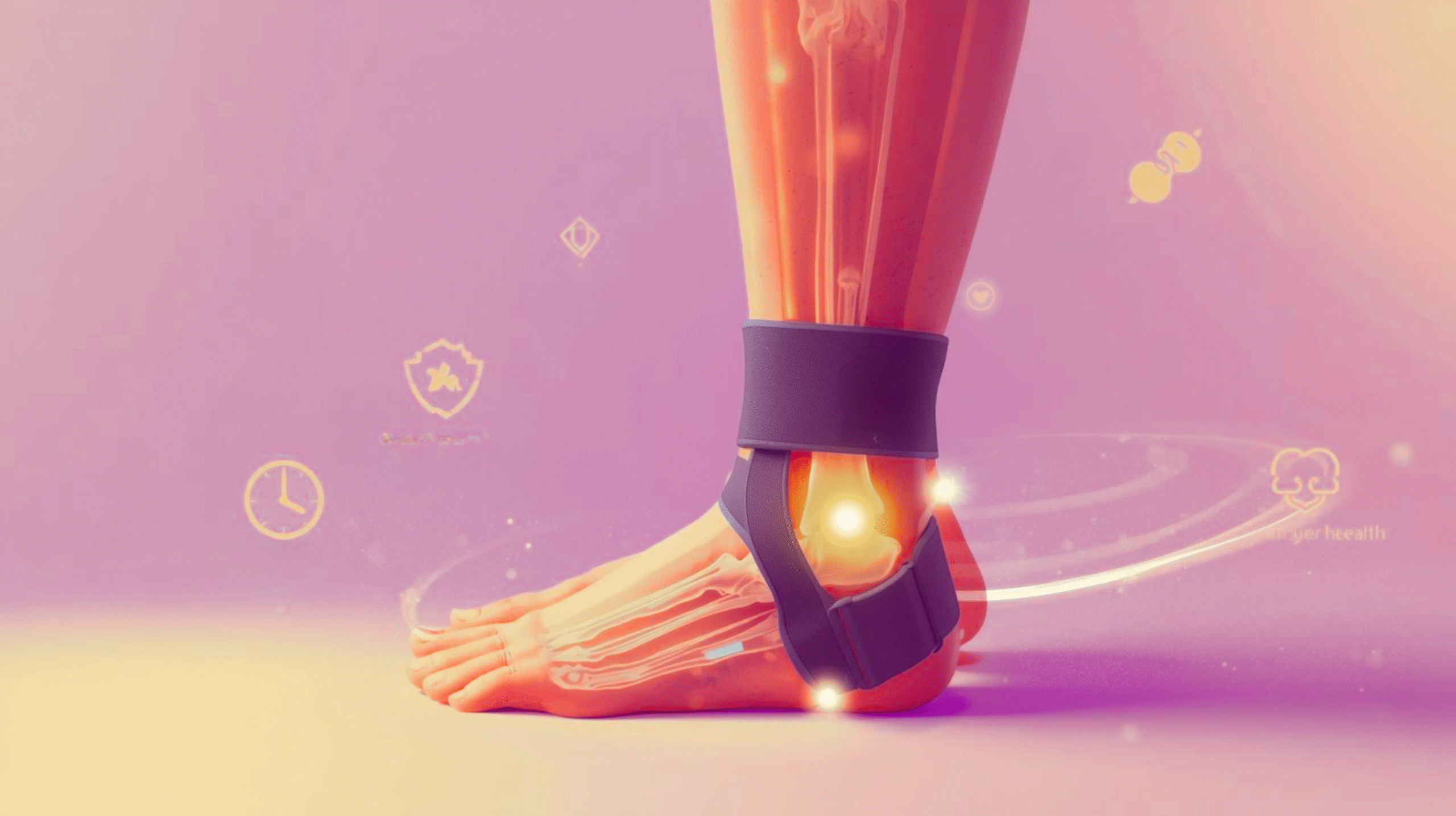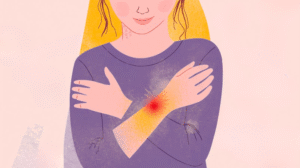Ankle sprains are among the most common injuries worldwide, affecting athletes, gym-goers, and even people simply walking on uneven ground. A sudden twist or roll can overstretch or tear ligaments that stabilize the ankle joint. Depending on the severity, a sprain can cause swelling, bruising, stiffness, and weeks of discomfort.
While rest, ice, compression, and elevation (the RICE method) remain the cornerstone of initial care, ankle support braces play a critical role in stabilizing the joint, preventing further damage, and aiding recovery. These supports are not just for athletes, they benefit anyone dealing with ankle weakness, previous injuries, or repetitive stress from daily life.
In this article, we’ll explore ankle brace use: what they are, when to wear them, their benefits, correct usage, risks, and who should consider them. Whether you’re healing from an ankle sprain, protecting yourself during sports, or seeking daily comfort, this guide will help you use ankle supports effectively and safely.
What Is an Ankle Support Brace?
An ankle support brace is a wearable device designed to stabilize the ankle joint and limit excessive or harmful movements. It works like external scaffolding, your ligaments provide natural stability, but after injury or under extra stress, the brace adds reinforcement.
Braces come in various forms:
- Elastic sleeves → Provide mild compression, improve circulation, and reduce swelling.
- Compression wraps → Flexible bandages or straps offering adjustable support for mild sprains.
- Semi-rigid braces → Lightweight designs with straps or side supports that prevent inversion/eversion (rolling inward or outward).
- Rigid braces → Strong, medical-grade devices used for severe sprains or post-surgical recovery.
Each type serves a specific purpose, and choosing the right one depends on the stage of recovery and your activity level.
When Should You Use an Ankle Brace?
Protocols for wearing ankle support depend on the condition of the joint and your activity. Below are the most common situations:
1. Acute Sprains
- Right after injury, especially in Grade I (mild) and Grade II (moderate) sprains.
- Braces provide compression, reduce swelling, and prevent further ligament damage.
2. Post-Surgical or Severe Injuries
- In cases of ligament tears or ankle reconstruction, doctors often prescribe rigid braces.
- These immobilize the joint and protect healing tissues during early recovery.
3. Sports and Gym Training
- Athletes use braces as a preventive measure during basketball, football, gymnastics, or running.
- In the gym, the ankle supports help with squats, lunges, or plyometric training by stabilizing the joint under load.
4. Everyday Support
- For individuals with weak ankles or a history of multiple sprains.
- People with long-standing jobs requiring standing or walking may use lightweight compression braces for fatigue relief.
Benefits of Ankle Support Braces
Pain Relief
- By restricting harmful movement and compressing soft tissues, braces reduce ligament stress.
- Less strain = less pain, making daily activities manageable.
Joint Stabilization
- Prevents excessive rolling of the ankle.
- Keeps bones and ligaments aligned during movement.
Reduced Swelling and Inflammation
- Compression improves blood flow and prevents fluid buildup.
- Especially useful in the first 72 hours post-injury.
Protection During Recovery
- Works like a safety barrier if you accidentally twist, the brace absorbs the strain, protecting healing ligaments.
Improved Mobility in Daily Life
- Allows you to walk, work, and exercise with confidence.
- Helps return to routine activities faster without fear of re-injury.
Usage Protocols for Ankle Braces
Using an ankle brace correctly is key to its effectiveness. Below are the standard protocols to follow:
Choosing the Right Brace
- Elastic sleeve: For mild sprains, daily wear, or preventive use.
- Compression wrap: Adjustable support for swelling and early recovery.
- Semi-rigid brace: Ideal for sports and moderate sprains.
- Rigid brace: Only for severe injuries or post-surgery, under medical advice.
How to Wear Correctly
- Always wear over a sock to prevent skin irritation.
- Ensure it feels snug but not overly tight.
- Check for circulation: toes should not feel numb, cold, or tingly.
- Follow the manufacturer’s instructions for strapping and adjustments.
Duration of Use
- Acute sprain recovery: Usually 2–6 weeks, depending on severity.
- Sports prevention: Wear during training and competition.
- Daily life: Use as needed, but avoid 24/7 reliance.
Cleaning and Maintenance
- Hand wash with mild soap and cool water.
- Air-dry completely before reuse.
- Avoid machine drying, as it may damage elasticity.
When to Stop Using
- Gradually reduce use once pain and swelling decrease.
- Transition to strengthening and balance exercises to restore full function.
- Consult a doctor if pain persists despite brace use.
Risks and Limitations of Ankle Braces
While ankle supports are highly beneficial, they also come with certain limitations:
Muscle Weakness from Over-Reliance
If you wear braces all the time, ankle muscles may weaken because they are not being used naturally.
Not Suitable for Severe Tears Alone
Major ligament tears may require medical treatment, imaging, or surgery. Braces alone cannot heal them.
Skin Irritation
Wearing braces for long hours, especially in hot weather, can cause rashes or friction burns.
False Sense of Security
A brace reduces risk but does not make you immune to injury. Proper warm-up, footwear, and technique remain essential.
Who Should Use Ankle Braces?
- Athletes: Basketball, football, volleyball, gymnastics, and running put high stress on ankles.
- Gym-goers: Weightlifters and people doing dynamic training.
- Post-injury patients: Recovering from sprains, fractures, or surgery.
- Workers on feet all day: Nurses, factory workers, teachers, and retail employees.
- People with weak ankles: Those who have sprained their ankles multiple times.
Final Thoughts
Ankle support braces are simple yet powerful tools in sprain recovery and injury prevention. They stabilize the joint, reduce pain, and provide confidence during movement. However, they should be seen as part of a larger recovery plan not a replacement for physiotherapy, strengthening, or medical treatment.
The protocol is simple: choose the right brace, wear it correctly, use it for the right duration, and gradually wean off while strengthening your ankle. With this balanced approach, ankle supports can help you heal faster, move better, and stay injury-free.
Frequently Asked Questions
1. Can I wear an ankle brace while sleeping?
Not usually recommended unless prescribed after surgery.
2. Can an ankle brace cure a sprain?
No, it supports healing but does not repair damaged ligaments.
3. Should I wear a brace after recovery to prevent future sprains?
Yes, during high-risk sports or activities.
4. How long should I wear an ankle brace daily?
Only during activity or recovery periods, not continuously all day unless instructed.
5. Do I still need rehab if I use an ankle brace?
Yes. Strengthening, stretching, and balance exercises are vital for long-term ankle health.
References
- Kerkhoffs, G. M. M. J., Rowe, B. H., Assendelft, W. J. J., Kelly, K., Struijs, P. A. A., & Van Dijk, C. N. (2002). Immobilisation and functional treatment for acute lateral ankle ligament injuries in adults. Cochrane Database of Systematic Reviews, 3, CD003762. https://doi.org/10.1002/14651858.CD003762
- Mohammadi, F. (2007). Comparison of 3 preventive methods to reduce the recurrence of ankle inversion sprains in male soccer players. American Journal of Sports Medicine, 35(6), 922–926. https://doi.org/10.1177/0363546507299259
- Verhagen, E. A. L. M., & Bay, K. (2010). Optimising ankle sprain prevention: A critical review and practical appraisal of the literature. British Journal of Sports Medicine, 44(15), 1082–1088. https://doi.org/10.1136/bjsm.2010.076406
- Wikstrom, E. A., Hubbard-Turner, T., & McKeon, P. O. (2013). Understanding and treating lateral ankle sprains and their consequences: A constraints-based approach. Sports Medicine, 43(6), 385–393. https://doi.org/10.1007/s40279-013-0043-z


















